Types Of Solar Panel
About Types of Solar Panel
Today, there are different types of solar panel available in the market. A solar panel is also known as solar PV panel, solar photo-voltaic panel, solar power panel etc. When we think to install or buy a solar panel for home or office than is important to know about the different type of solar panel. Also we should know how these solar panel works, what is their efficiency level etc. People often become confused that which type of solar panel they should buy for their place.
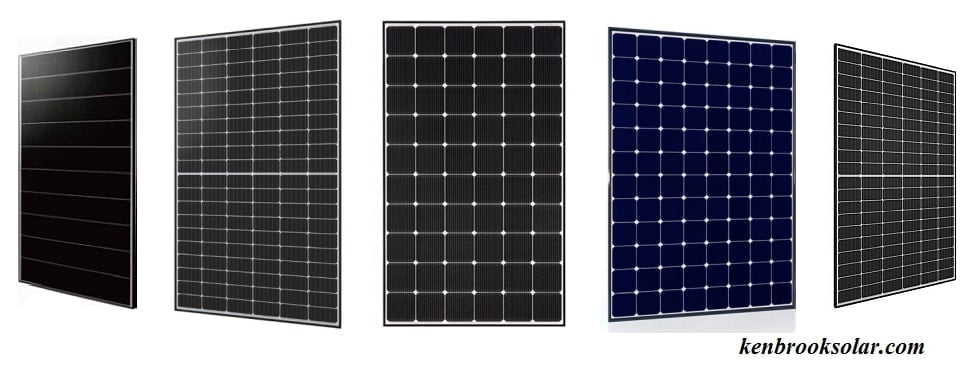
Solar panel is a similar and key component in any type of solar system that generates electricity. Solar panels are designed and manufactured in many models and types. Monocrystalline, polycrystalline panel, thin film solar panels are some of their most common types. Here we will discuss about type of solar panel in detail.
Types of Solar Panel
There are many types of solar panel. Currently, solar panels are available in following types as mentioned below.

- Mono PERC Solar Panel
- Thin Film Solar Panel
- Bi-facial Solar Panel
Each type of solar panel is different from other type of panel on the basis of their formation, their efficiency and the material used during manufacturing process. However, all solar panel perform the same work i.e. they all are used to generate electricity from sunlight. Now its time to learn about all type of solar panel in detail. Have a look below to learn more about them.
Monocrystalline Solar Panel
- These solar panels are one of the most efficient photo-voltaic solar panel technology with around 19% to 20% efficiency.
A monocrystalline solar panel is the best solar photo-voltaic technology to generate electricity. This is one of the traditional type of solar panel that is most commonly used in home and business purpose. A monocrystalline solar panel is the best solar panel in sense of their efficiency.
Monocrystalline solar cells are used to manufacture these solar panel. These solar cells are made out of high quality/pure single crystal silicon. These silicon crystals are usually of an oval shape. Further the mono cells are arranged in a grid like pattern to make the solar panel.

This type of solar panel can easily recognizable due to their uniform dark look and round edges. The efficiency level of these solar panel is around 19% to 20%. The high quality silicon makes the solar panel more durable for high temperatures. But because of highly pure silicon, these solar panels are little bit expensive. These solar panel require less space to install.
Read in detail about: [maxbutton id=”40″ ]
Pros & Cons Of Monocrystalline Solar Panel
Pros – Advantages
- High efficiency rate i.e. >19%.
- Best for high temperature regions.
- Long estimated working life.
- East to install and access.
Cons – Disadvantages
- Expensive compare to other panel.
Polycrystalline Solar Panel
- These solar panels are best value panels and they are also consistent player in the field of energy generation.
Polycrystalline solar panels are most popular type of solar panel that have been top most choice of peoples since last several years. Squares and uncut angles are the specialty of these solar panels. To manufacture a polycrystalline solar panel, fragments of multiple raw silicon crystals are heated, melted and formed together to manufacture a poly solar cell.
Polycrystalline solar panel is consistent energy generator and cheaper than monocrystalline solar panel. Poly solar panel have blueish hue on their surface and also they have speckled/distinctive look. This type of solar panel is affected by hot environmental temperatures.
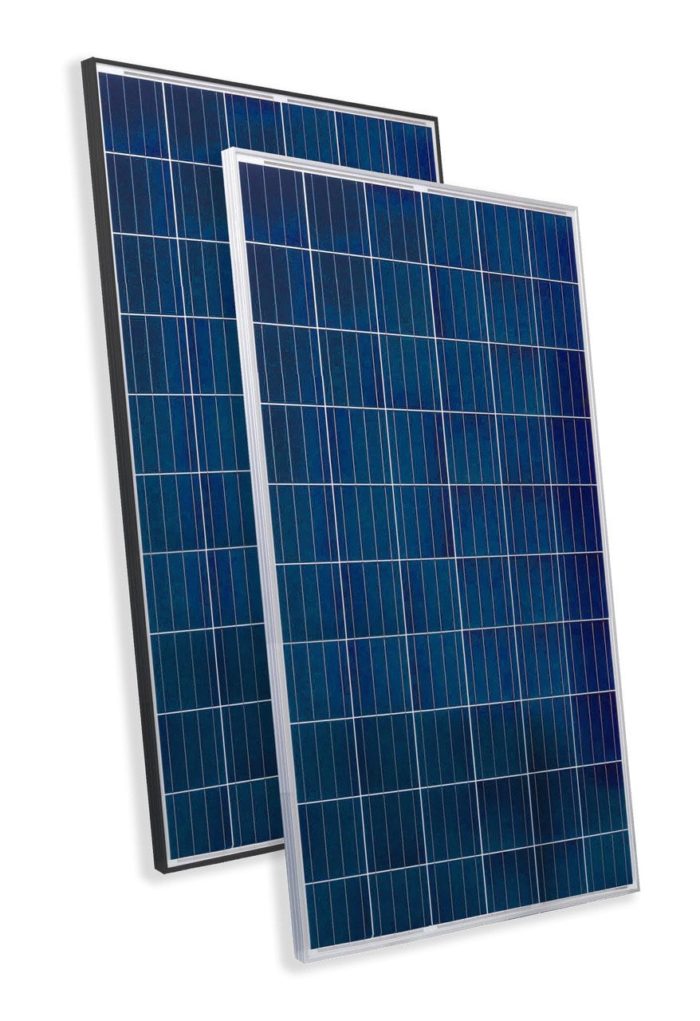
Polycrystalline solar panels are less efficient when compared to monocrystalline solar panels because of some impurities in raw silicon. The efficiency level of polycrystalline solar panel is around 16% to 17% while mono panels are around 19% efficient.
Read in detail about: [maxbutton id=”41″ ]
Pros & Cons Of Polycrystalline Solar Panel
Pros – Advantages
- Cheaper than other panel.
- Consistent performer in all circumstances.
- Most reliable solar panel.
- East to install and maintain.
Cons – Disadvantages
- Less efficient compare to mono panel.
Mono PERC Solar Panel
- These solar panels are highly efficient and extremely suitable panels where high power generation is required.
PERC technology has led to a great development in the solar power sector. Basically PERC stands for Passivated Emitter Rear Cell. In this type of solar panel, an additional reflective layer (Dielectric Layer) is added on the back of solar panel.
This layer allows part of the photons passing through the cell to be reflected back to the cell. Therefore, a mono PERC solar panel is comparatively more efficiency than other solar panel. Solar panels with mono PERC technology allows for more energy-dense solar installations. This means that you can generate same amount of electricity by using fewer PERC solar panel than standard solar panels.
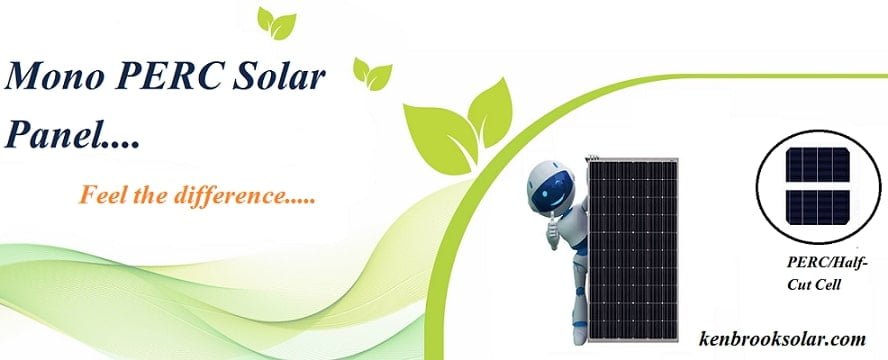
Fewer solar panels are flexible to adjust for rooftop installations. A mono PERC solar panel helps to reduce land and other balance of system (BoS) cost for developer and provides maximum benefits to its user. So you can install these solar panel at your home and commercial areas as well.
Pros & Cons Of Mono PERC Solar Panel
Pros – Advantages
- High efficiency solar panel.
- Required less space to install.
- Adjustable according to rooftops.
- East to maintain and access.
Cons – Disadvantages
- Little bit expensive than other panels.
Thin Film Solar Panel
- These solar panels are fully portable and light weight solar panel. Thin film solar panels can be used where portability is a major concern with low energy requirements.
A thin film solar panel technology have the lowest market share in India as well as in other countries. Thin film solar cells are used to manufacture this type of solar panel. These solar panels can be a good option for those solar projects where the portability is a major concern. And also where the low power generation is required.
A thin film solar panel is manufacture by placing several films of photovoltaic materials which mainly include amorphous silicon, cadmium or copper. These solar panels are easy to manufacture and because of this feature, they are less expensive or cheaper than poly and monocrystalline solar panel. Rather than their affordability feature, they are also flexible. Even these solar panels are less sensitive to high temperature.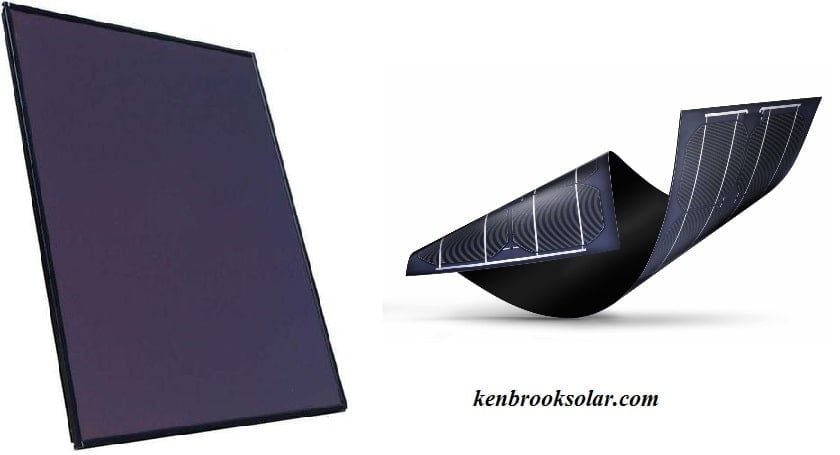
But if we talk about its disadvantage than low power generation along with short estimated working life is major problem in this type of solar panel. Thin film solar panels require more space to get install, therefore they are not suitable for residential purpose.
Pros & Cons Of Thin Film Solar Panel
Pros – Advantages
- Portable and flexible solar panel.
- Light weight compare to mono/poly panel.
- Fully customizable solar panel.
- Cheap source of electricity generation.
Cons – Disadvantages
- Require more space for installation.
- Lowest performance i.e. 8% to 12%.
Bifacial Solar Panel
- These solar panels are new technology solar panel with great power generation feature. A bifacial panel has the ability to generate electricity from both i.e. front & rear side.
A bifacial solar panel is a new technology solar panel. As cleared by its name, it is a double-sided solar panel that generate electricity through sunlight. A bifacial solar panel can produce electricity from both sides. This new technology solar panel will provide great benefits to you over other normal solar panel.
A bifacial solar panel is equipped with mono/poly solar cells on both the top and the rear side of the panel. These solar panels are very thin compare to other models of photo-voltaic solar panel. The top side of each panel is covered with protective glass and the backside may be glass covered or a clear backsheet depending upon its design.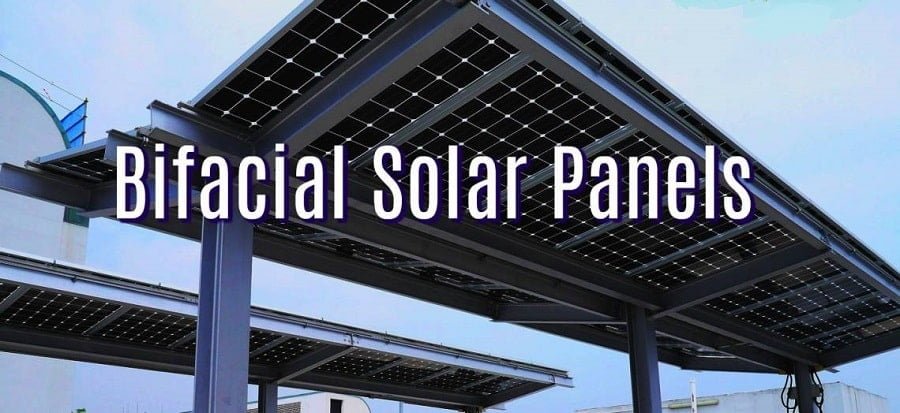
In market, a bifacial solar panel is available in many designs. Some of them are framed while some are frameless. Similarly, some panel comes with dual-glass while some use clear backsheet. These solar panels are fully customizable according to your requirements.
Pros & Cons Of Bifacial Solar Panel
Pros – Advantages
- Both side energy generation feature.
- More power output compare to others.
- Light weight solar panel.
- East to install, maintain and access.
Cons – Disadvantages
- Costly than other solar panels.
